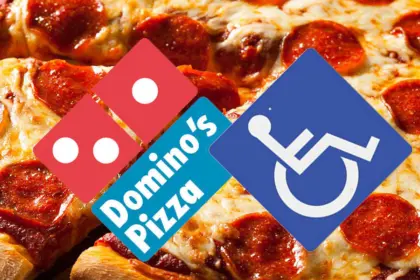What the Dominos ADA Court Ruling Means for Website Owners
For anyone not familiar with the ruling made by the Ninth District Court of Appeals on Tuesday, they found that Domino’s Pizza website, used by customers to order food for pickup and delivery, is covered by the Americans with Disabilities Act (ADA). This means that Dominos needed to make sure it’s site was accessible to those with disabilities. Let’s take a look at how this came to be, and what it means if you are a website owner.

For anyone not familiar with the ruling made by the Ninth District Court of Appeals on Tuesday, they found that Domino’s Pizza website, used by customers to order food for pickup and delivery, is covered by the Americans with Disabilities Act (ADA). This means that Dominos needed to make sure it’s site was accessible to those with disabilities. Let’s take a look at how this came to be, and what it means if you are a website owner.
How this Ruling Came to be
Back in 2016, Dominos was sued by a blind customer because he was unable to order a pizza through their website or app. Neither were compatible with standard screen reading software, which would allow this customer to do so. His argument was that Domino’s digital tools should be in compliance with the Web Content Accessibility Guidelines (standards for making content accessible for people with disabilities). While the lower courts disagreed with this customer, the Appeals Court did not, stating that the franchise had ample time to meet the law’s requirements. Note: The ruling only states that the website is covered under ADA. It did not include whether or not the website and app actually comply with the law. This was pushed back to the lower courts.
What this Ruling Means for Website Owners
The ruling itself was hinged on the fact that Domino’s restaurants are places of “public accommodation”, and the website and app are extensions of these restaurants. So what does this mean for the rest of us? Seeing that these types of cases dramatically risen in the last year, this ruling opens the door for many similar cases to be filed against non-compliant websites and applications. Companies that neglect to provide all people an accessible experience through their digital channels put themselves at risk.
The ruling exemplifies the importance of accessible content for all members of the public and that these situations will not being taken lightly. All of this can be avoided simply by having a content strategy in place and properly following the Web Content Accessibility Guidelines on your current website or being sure it is done during the building process of a new one.
My belief is that companies who are not in compliance with these guidelines would need to be warned about their accessibility issues and given an adequate amount of time to rectify the situation before things escalate, but we’ll have to wait and see how the lower level courts rule regarding whether or not Domino’s digital channels comply with the current guidelines.
If you are unsure whether or not your company’s website is in compliance with ADA or if you are at risk, please reach out to us. We would be happy to take a look and talk through your future strategy.
Contents
Tags
Next Article

What can Marie Kondo and Tidying Up Teach Us About Marketing
If you’re not familiar with Marie Kondo, she is a recently famous organizing consultant, best-selling author and star of the new Netflix series Tidying Up. Each episode of the show, Marie helps families organize and declutter their homes and their lives, leading them to a happier, less overwhelming lifestyle. So why am I telling you about Marie Kondo, and what does her show have to do with marketing? At first glance, it may seem like nothing, but let's take a deeper look.